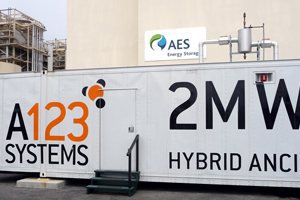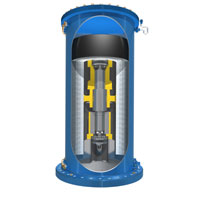 A 2 MW battery the AES Huntington Beach power plant.
A 2 MW battery the AES Huntington Beach power plant.
Energy storage (through batteries) is something we use everyday in our cell phones and computers. So it may be a little surprising that when it comes to the electric grid, storing energy is something that's rarely done.
California's grid is designed to deliver electricity on a real-time basis. Every four seconds, the grid operators at the California Independent System Operator have to ensure that the energy supply meets the demand in the state - something that's known as "balancing the grid." (You can check out today's electricity forecast on their site). As a result, they coordinate the one piece of the system that they have control over: the generators, like natural gas plants.
Luckily, most generators produce a steady power supply. But California is adding increasing amounts of solar and wind power to the grid each year. Since the output of a solar or wind farm depends on the sun or wind, the power they produce is variable (here's a time-of-day profile of renewable energy on the grid today). That causes problems for the grid operators on a number of levels. Wind farms produce most of their power at night, but that's when demand for power is lowest. Solar farms using photovoltaics can drop off substantially when the sun disappears behind clouds. And large solar thermal farms ramp up extremely fast when they are first hit by the sun in the morning.
Energy storage is one of the ways that utilities and grid operators can address this intermittency. By having some extra electricity on hand, they can smooth out the bumps caused by these renewables. Just how to store energy is another issue. Here are some of the ways it can be done.

 A Beacon Power flywheel.
A Beacon Power flywheel.